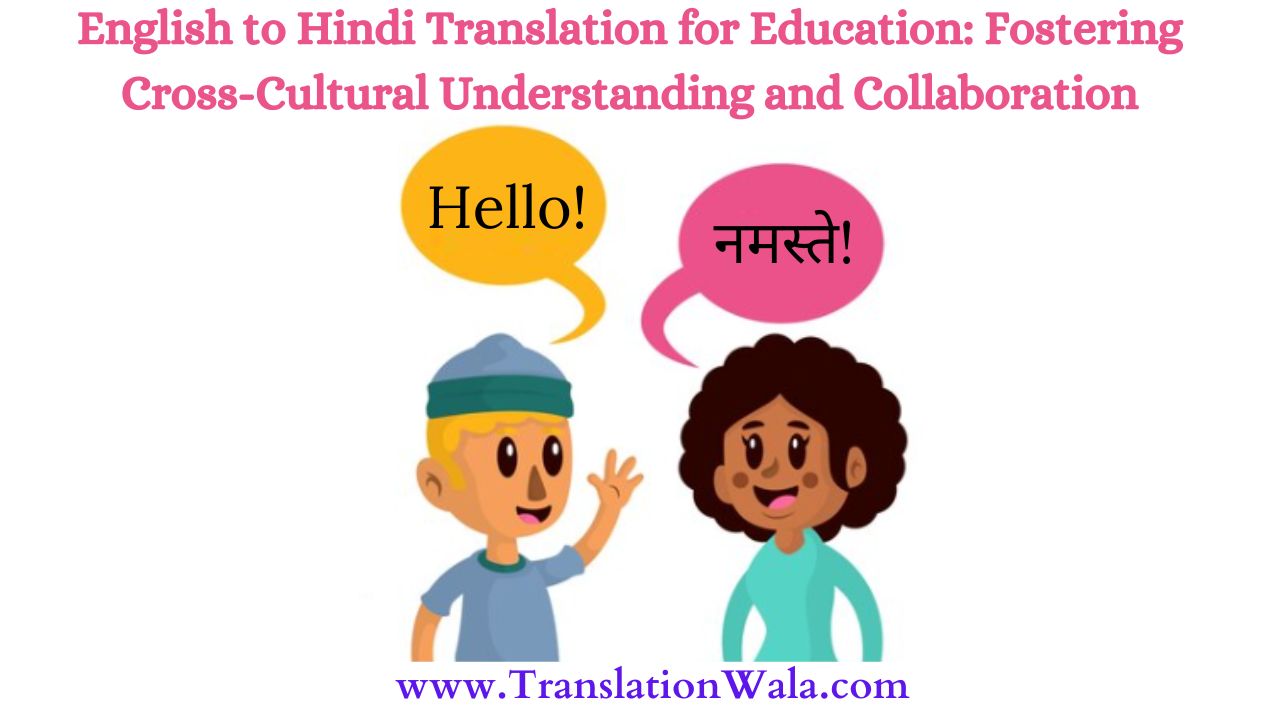As the world becomes more linked, schooling is a key part of making it easier for people around the world to understand each other and work together. Language hurdles, on the other hand, can often make this process harder. English to Hindi Translation is becoming an important tool in education because it helps students share what they know and learn about other cultures. This piece talks about the importance of translating from English to Hindi in schools, focusing on how it helps students understand other cultures and work together to learn.
Breaking Down Language Barriers: The Importance of Translation in Education
Language is the building block of learning. Students have a harder time understanding knowledge and thinking critically when they are presented with educational tools in a language they don’t fully understand. This problem is fixed by translating from English to Hindi, which gives Hindi-speaking students equal access to a huge library of learning materials. Among these are:
- Globally recognized academic publications: A lot of academic study is done and written in the English language. By turning these materials into Hindi, students can access cutting-edge information in many areas. This helps them learn new things and stay up to date on changes happening around the world.
- Standardized testing materials: Standardized tests are used by many schools to admit students or grade their work. Translation from English to Hindi makes sure that these tests are fair and open to all students, so language doesn’t get in the way of doing well in school.
- Online learning platforms: The rise of online learning tools has changed the way people learn. However, most of the material on these sites is written in English. Hindi-speaking students can take online classes with the help of translation, which gives them more flexible and varied learning options.
Also Read: Seamless Understanding: English to Tamil Translation Solutions
Fostering Cross-Cultural Understanding: A Window into Different Perspectives
Education does more than teach facts; it also helps people understand and respect different cultures and points of view. English to Hindi Translation is an important part of promoting understanding between cultures because it lets people:
- Exposure to different cultural narratives: Students can learn about the lives, experiences, and points of view of people from English-speaking countries through literature, history stories, and other culture works that have been turned into Hindi. Their view of the world grows as a result, and they learn to understand and respect other nations.
- Appreciation for shared human experiences: Even though people come from different cultures, there are some topics and situations that everyone can relate to. Translation helps students see these similarities, which builds a sense of global responsibility and encourages people to live together peacefully.
- Critical thinking and analysis: Students are more likely to think critically about what they read when they are reading translated works. They learn to spot culture biases, contrast different points of view, and form their own well-informed views on a range of topics.
Collaborative Learning: Breaking Down Walls and Building Bridges
Working together is great for education. Translation makes it easier for students who speak English and Hindi to talk to each other and share what they know. This makes it possible for them to learn together. Among these are:
- International research projects: Translation makes it possible for students who speak different languages to work on study projects together, sharing their knowledge and skills. This encourages new ideas, the ability to solve problems, and connection across cultures.
- Global classrooms: Online learning tools can be used to make virtual classes where students who know English and Hindi can meet, talk, and learn from each other. This encourages people to work together to learn and accept each other’s different points of view.
- Exchange programs: Translation is an important part of student exchange programs because it helps people talk to each other easily. These groups give kids real-life experiences with other countries, which helps them make friends for life and understand other cultures better.
But translating school materials comes with its own set of problems. A more detailed method is needed because of differences in sentence form, cultural references, and idioms.
- Accuracy and fluency: It’s important that translations are correct and express the intended message while keeping the natural flow in the target language (Hindi).
- Cultural sensitivity: To avoid misunderstandings, translators need to be aware of subtle cultural differences and change the words they use.
- Technical expertise: For translating science papers and making sure ideas are clear, technical precision is very important.
Investing in good translation services and encouraging teachers and translators to work together can help solve these problems and make sure that translated materials work.
Also Read: Punjabi Expressionism: The Essence of English to Punjabi Translation
Conclusion: A Bridge Towards a Brighter Future
In education, English to Hindi translation is a great way to break down language obstacles, help people from different cultures understand each other, and encourage group learning. Translation makes it possible for students to receive information from all over the world and have relevant conversations with classmates from different backgrounds. This creates a more open and shared learning environment. As we move toward a more linked future, spending money on translation opens up a lot of doors. It helps people around the world understand each other and work together, which is good for everyone.
